Most people neglect roof inspections until the damage becomes ridiculously expensive and impossible to ignore. However, the roof is one of the most fundamental aspects of any structure. Ignoring short-term problems only leads to long-term critical failures. It’s important to know when you need to schedule a roof inspection, even without signs of damage.
Have There Been Recent Storms?
Bad weather can damage your roof, even if the signs are not evident yet. Storms can cause significant damage to your roof’s fortitude, but unless there is a leak, you probably won’t even notice. Even people with tiny houses have parts of their roofs that are not visible from the ground, so detecting damage to shingles at the top of the roof or in crevices is impossible.
Shingle damage is one of the most prominent consequences of harsh storms because the winds can rattle them and shake them loose. In some areas, severe storms also include hail damage, ice shards, snow buildups, and lightning. An inspection right after a storm will check for any signs of wear. Roofing professionals will look for disrupted gutters, shingles coming loose, and water puddling on your roof.
Has It Been a Year Since Your Last Inspection?
It is best practice for homeowners to schedule an annual roof inspection as a regular preventative measure. Yearly roof inspections result in houses that last longer and save most people money in the long term. Workers can check for signs of water damage, mold, shingle issues, and other structural problems that can be caught before they progress. Regular inspections can save you money because mold and rot can completely destroy a home if left unaddressed.
Is Your Roof Over 10 Years Old?
If your roof is over 10 years old and you’ve been neglecting to schedule yearly inspections, it’s time to start. For most people in areas with moderate weather, roofs will be fine for the first 10 years. However, a decade after its installation, your roof will start to show its age, and workers should regularly inspect it. Even if you don’t notice anything wrong with your roof, you should still contact licensed professionals to do a quick and thorough check because there are so many minor issues that could go unnoticed.
Many houses boast roof shingles that are guaranteed to last more than 10 years. However, companies make those promises on the assumption of ideal circumstances. Environmental concerns, such as rapidly changing weather, intense climates, and wild vegetation, can all affect this promise. Contractors should inspect even the best roofing materials after 10 years.
Are You About to Buy a Home?
Most people get so caught up in the excitement and stress of purchasing a home that they forget a few crucial maintenance checks, like a roof inspection. You should schedule professional workers to check your roof for damages if you recently purchased a home or are planning to buy one.
Has It Been Humid and Damp Lately?
It’s hard to find a source of roof damage worse than mold. Mold is pervasive, invasive, and difficult to remove permanently. If left unchecked, mold can ruin your entire roof. The cost of fixing roof damage from extensive mold is far more than the cost of regular inspections. Annual maintenance checks will help detect any mold early. If you have had unusually damp and humid weather, you should schedule a roof inspection to look for signs of mold development.
Are You Trying to Sell Your Home?
You should also consider a roof inspection if you’re trying to sell your home. You want to ensure that there’s nothing wrong with the roof before putting the house on the market. Otherwise, a bad roof will become a massive problem for buyers who may become uninterested in fixing your home. An inspection is also a good idea because a recent roof check with a bill of good health is a great way to increase your residence’s market value.
Are There Large Tree Branches Near or Over Your Home?
Trees can cause a lot of problems for homeowners. If a tree is too close to your home, its roots can cause structural damage to the foundation, and its branches can cause damage to your roof.
At the very least, tree branches over your roof cause excessive maintenance demands in the autumn when the leaves fall. You will have to blow the leaves off your roof constantly. If you let them accumulate too much, they will clog your gutters and cause water damage. Also, they will rot in giant clumps on your roof, which is a prime environment for mold to grow and infect your roof.
Large tree branches also pose a safety threat because they could cause immense damage if they fall during a storm. Old trees are doubly dangerous because their large branches are more prone to rotting and falling off suddenly. A roof inspection will help identify whether you have potentially hazardous branches over your residence.
Is Your Roof Leaking?
Your roof leaking is the ultimate sign that it’s time for a roof inspection. While the fact that your roof is damaged can be evident, a roof inspection will let the professionals assess the extent of the problem and give you a solution to fix it. If you notice leaks coming from your residence’s roof, you must immediately schedule a roof inspection with professionals so you can minimize the damage as much as possible.
When Should You Schedule a Roof Inspection?
There are seasonal considerations to make when scheduling a roof inspection. Winter is the roughest season for most people’s homes because of the drastic temperature change and the erratic and intense weather. Residents whose homes get snow face double the challenges, so, ideally, you should schedule a roof inspection in the fall before a noticeable temperature drop. This inspection ahead of time ensures your roof is in good condition before winter comes with harsh weather. It allows you to enjoy the winter holidays without stress and limits the work that contractors have to do on slippery roofs and in hazardous working conditions.
Additionally, you save money on your energy bill because ensuring your insulation is up to standard is part of a roof inspection. Another thing that roof workers will check is your shingles. Shingles with proper, strong sealing to your roof are vital for winter weather. Otherwise, there could be gaps in your roof where water could puddle and generate mold and water damage. Openings in your roof will also lead to increased exposure to wind damage.
Of course, if you have a considerable emergency with damage to your roof, you should still schedule an inspection to figure out a plan. In the winter, addressing roof emergencies quickly and efficiently is even more critical than in other seasons because of the climate.
Call the Experts
Now that you know what to look for to prevent further roof damage, you should consider scheduling a regular inspection. Jim Rhubart Roofing operates in Woodbine, NJ and South Jersey. We are professionals with years of experience in excellent roof inspection and even better customer service. We also offer many other roofing services beyond a regular review, so you can get any damage to your roof fixed without stress. Jim Rhubart Roofing provides roof repairs, maintenance, and even roof replacement. We offer Roof Maxx, a plant-based spray formula that helps strengthen existing shingles instead of replacing them. Contact Jim Rhubart Roofing to make an appointment and to learn more about our services.






